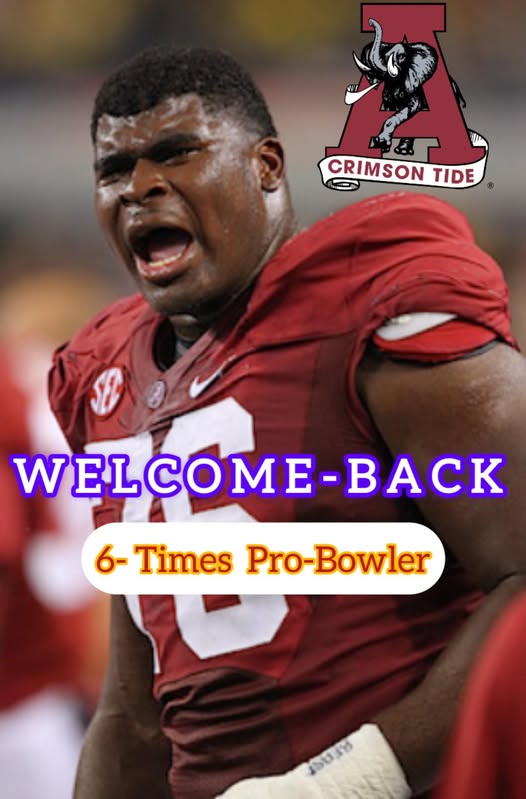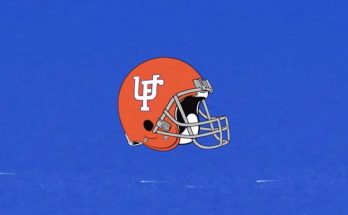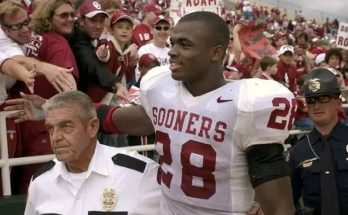Here’s a detailed and engaging look at Owen Cabell’s commitment to Alabama football:
Owen Cabell, a three-star wide receiver from Nashville, Tennessee, has officially committed to play for the Alabama Crimson Tide. Announced on June 30, 2025, Cabell becomes the first wide receiver in Alabama’s 2026 recruiting class and marks the program’s 15th overall commitment (rollbamaroll.com). Standing six-foot-three and weighing around 201 pounds, Cabell ran a blazing 4.4-second 40-yard dash and clocked a 10.76-second 100-meter time during a private workout in Tuscaloosa, leaving a strong impression on receivers coach JaMarcus Shephard (rollbamaroll.com).
Cabell’s rise isn’t exactly overnight; he began his recruitment unranked but steadily climbed into the three-star range across major recruiting services—Rivals, ESPN, On3, and 247Sports—each rating him as a modest three-star prospect . Initially, programs such as Illinois, Vanderbilt, Duke, Indiana and Western Kentucky extended interest, with Illinois particularly active in courting him for over a year (rollbamaroll.com). Throughout this period, he accepted what’s often called “soft” scholarship offers and participated in camps at various schools, gradually increasing attention to his athletic potential.
At Christ Presbyterian Academy, Cabell’s junior season was particularly impressive. Over 12 games, he recorded 43 catches for 973 yards, averaging 22.6 yards per catch and crossing the end zone 14 times (rollbamaroll.com). Additionally, he contributed more than 1,200 all-purpose yards and played a key role in leading his team to back-to-back state championships . On the track, he proved his elite speed: a 10.76-second 100-meter dash and sub-4.5-second 40-yard performance showcase both measurable talent and fringe-athlete explosiveness (rollbamaroll.com).
The turning point came in early June when Cabell visited Alabama for a private workout. Under the direct observation of receivers coach Shephard, who quickly recognized his potential as a playmaker with size, speed, and hands, Alabama extended an on-the-spot scholarship offer (rollbamaroll.com). After this Tuscaloosa session, he took official visits to Vanderbilt, Illinois, and Duke, but once another official visit to Alabama was scheduled for June 20, Cabell decided to commit—and promptly canceled the others (rollbamaroll.com).
Once publicly announcing his commitment, Cabell joined Alabama’s 2026 class as its first wide receiver and 15th overall recruit (si.com). Mason Woods of Sports Illustrated noted that Cabell fits the mold of the type of receivers head coach Kalen DeBoer and coach Shephard covet: tall with a wide catch radius and the ability to win contested catches (si.com). Furthermore, Rivals’ Hayes Fawcett tweeted that Cabell chose Alabama over Vanderbilt and Illinois: “All Glory to GOD!! Roll Tide!!” (si.com).
Statistically, over two varsity seasons he has amassed nearly 1,500 receiving yards and 19 touchdowns while helping secure back-to-back state championships (si.com). His ranking currently sits at No. 148 nationally among receivers and No. 29 in Tennessee on 247Sports’ composite list (si.com). Though not yet a household name, Alabama’s coaches clearly believe they have uncovered an under-the-radar athlete capable of developing into a major contributor.
Owen comes from a competitive athletic family—his younger brother, Gabriel Cabell, also stands at six-foot-three and ran the 100 meters in 10.75 seconds, beating Owen by just 0.01 seconds. Gabriel is already a top prospect projected in the 2028 class (rollbamaroll.com). Clearly, speed runs in the family.
Alabama continues to demonstrate recruiting momentum. Owen Cabell is the eighth commit in eight days and the first wide receiver secured in this cycle (247sports.com). He’s joined schools including Nebraska, Duke, Illinois, Vanderbilt—programs that were vying for his talents before Alabama’s late push.
What does Owen bring to the table beyond raw metrics? First, size matters in the SEC. At 6–3, 200 lbs, he presents mismatch problems even for taller defenders. His catch radius, enhanced by length and coordination, allows for contested and downfield receptions. Second, speed is not just for show. His track times translate to separating prowess—operators willing to stretch verticals can thrive deep, while speed in precise route-running helps create separation in intermediate zones, vital for DeBoer’s offense. Third, his production history suggests a player unafraid of pressure situations—state championships, big plays, and endzone visits illustrate competitiveness.
From a development angle, Alabama is renowned for maximizing receiver potential. Under recent leadership, the Tide have transitioned from a run-heavy offense to one that emphasizes diversified passing schemes, utilizing receivers of various body types—from undersized shifty slot threats to big-bodied red-zone targets. Cabell adds versatility: outside alignment is probable, but his speed also suits boundary or vertical stretch responsibilities.
Beyond the field, Alabama’s program presents a holistic developmental environment—state-of-the-art facilities, national-title-caliber coaching, elite strength/conditioning, and proven placement into the NFL. For a player like Cabell, who is still maturing physically and in technique, that environment provides essential resources to elevate his game to top-tier levels.
His commitment also serves recruiting optics. Being the first receiver secured, Cabell sets a tone for other WR prospects in 2026. When a hitch like Cabell—the under-the-radar speedster—chooses Bama, it underlines that the Tide cast wide nets and reward high-ceiling potential. This could sway other talented recruits watching the class build, particularly those seeking early playing opportunities in a receiver corps that will feature upperclassmen but also room for ascendancy.
Looking forward, how might Cabell fit in on field with Alabama? Realistically, freshmen receivers at elite programs often redshirt or rotate sparingly. But given his speed, size, and special teams potential—which often becomes a freshman integration path—he could contribute on kickoff return units or deep shot packages. As upperclassmen graduate or move on to the NFL, Cabell may find himself rising on the depth chart by his sophomore or junior year, putting him in position to steadily grow into a primary target.
What remains for Cabell is the everyday grind—mastering Alabama’s playbook, refining route techniques, building rapport with the quarterback room, and absorbing coaching nuances. He’ll also need to stay healthy, supplement training with consistent weight-room gains, and demonstrate character in the classroom and community.
The media reaction has been positive. Sports Illustrated framed his signing as evidence that Alabama’s evaluators still wield acumen: identifying a high-upside receiver in Cabell signals both strength of recruiting and developmental confidence (rollbamaroll.com). Fan sites like RollBamaRoll lauded the acquisition as perfect timing—an under-the-radar athlete who ascended into recognition, much like other breakout success stories (rollbamaroll.com).
As Alabama rounds out its 2026 class, Cabell’s commitment adds complementary balance. With a mix of offense and defense already locked in, the Tide now secure a long-term fit at receiver who possesses both volume upside—thanks to his physical tools—and projection upside—owing to his athletic ceiling.
Recruiting is a dynamic mélange of timing, evaluation, relationship, and talent. Cabell’s path illustrates each: Alabama’s timely private visit highlighted his strengths, coaches built the relationship, and Cabell responded by canceling further recruitment once Bama became his choice. It’s a template of mutual affirmation: the school receives a forthcoming athlete ready to buy in; the athlete receives access to a national championship-level development pipeline.
In time, we’ll track his journey. Monitoring his freshman season through special teams and occasional packages, followed by sophomore breakout indicators—snap counts, target share, production—in the Crimson Tide’s offense will reveal how true the projection is. Given what we know—speed, frame, competitiveness, production background—it’s a projection with credible foundation.
For Alabama fans, Owen Cabell is a present in the recruiting cycle and a future piece on the field. For Tennessee football watchers, losing a Nashville talent to a neighboring powerhouse stings—but it’s the competitive reality of SEC dynamics. For Cabell himself, it’s a chance to rise, measured not by where he started but how high he can soar.
In sum, this commitment marks both a win for Alabama’s scouting apparatus and a pivotal moment in Cabell’s trajectory. A tall, fast, competitive receiver with production and academic promise, he’s poised to leverage Alabama’s infrastructure to reach new heights. As the Tide’s first receiver commit in 2026, he helps shape class identity and depth at a position that evolves annually in college football. Ultimately, the next few years will determine whether Cabell becomes a household name—or even a draft-day prospect—but the foundation laid today is powerful. Roll Tide, Owen Cabell—it’s time to rise.



